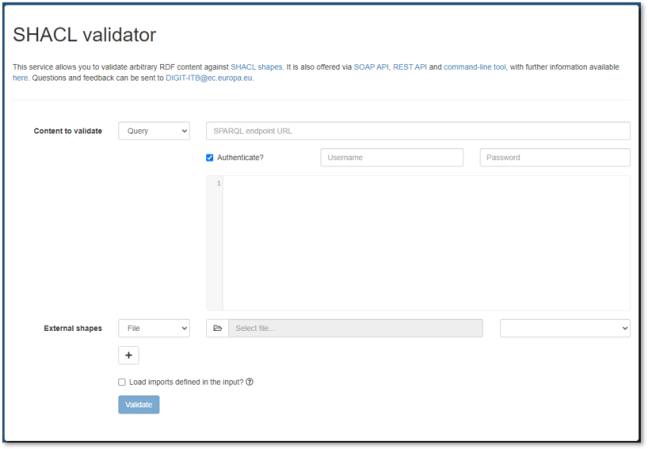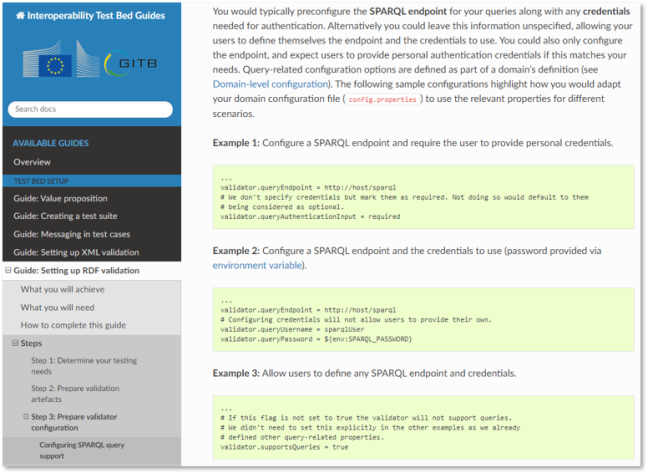
Validators built over the Test Bed's RDF validation service can now use SPARQL queries to load data from triple stores' SPARQL endpoints.

One of the Test Bed’s most popular services is its reusable RDF validation service. Allowing the validation of RDF data against semantic specifications by means of SHACL shapes, this service has been used since its launch to publish several validators as standalone services and conformance testing building blocks. Validator instances built over this service offer configuration flexibility and validation via several input channels including web user interface, REST API, SOAP API and command-line tool. Each of these channels allow the validation of RDF content as files, remote URIs or via direct input.
An input option that was missing from RDF validators was the possibility to dynamically load the content to validate by means of SPARQL queries. SPARQL is a query language for RDF that can be used to search triple stores via SPARQL endpoints, web services that use HTTP technologies to receive queries and return results. Use of triple stores and SPARQL endpoints is often seen in data ingestion workflows where data is harvested and then validated for quality control. Support for SPARQL queries in this case allows the storage and post-processing of RDF data as well as the selection of the data subsets that are pertinent for validation.
SPARQL queries are now directly supported for all validators built over the Test Bed’s RDF validation service. As part of the definition of a validator, a SPARQL endpoint’s information can now be configured, with options to support various scenarios such as anonymous endpoint access or user-provided endpoint URLs. Such configuration is already in place for the Test Bed’s generic RDF validator, a service allowing validation against user-provided SHACL shapes, where it is now also possible to query public SPARQL endpoints with optional authentication.

The latest update is also reflected in the Test Bed’s RDF validation guide, where information is provided on how to enable SPARQL query support for a given validator and then use queries to extract the data to validate.

The new possibility to query SPARQL endpoints extends the use cases for RDF validators, allowing them to be used as validation counterparts for triple stores, and quality control building blocks in data ingestion processes.
If you are interested in making use of RDF validation in your own processes, you can start by checking the Test Bed’s RDF validation guide. Details on the Test Bed itself can be found in its Joinup space with its value proposition being a good starting point for newcomers. Finally, to remain updated of all the latest Test Bed news:
Referenced solution


